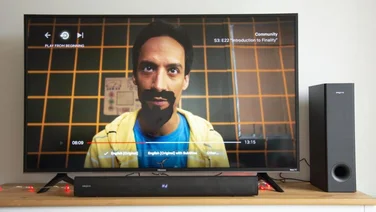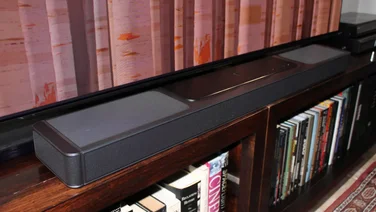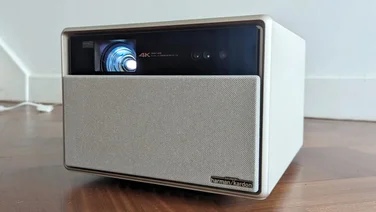To help us provide you with free impartial advice, we may earn a commission if you buy through links on our site. Learn more
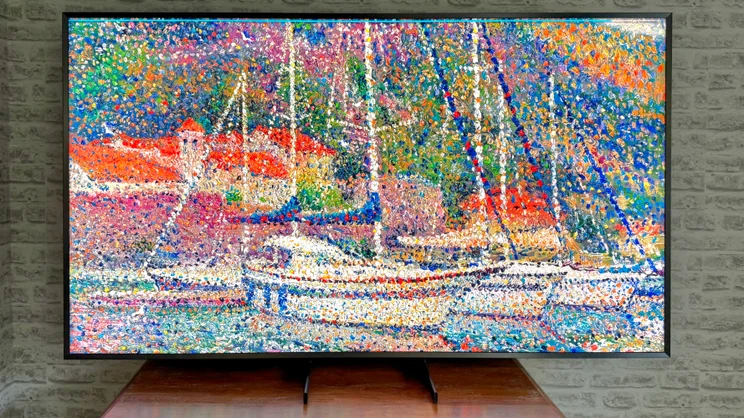
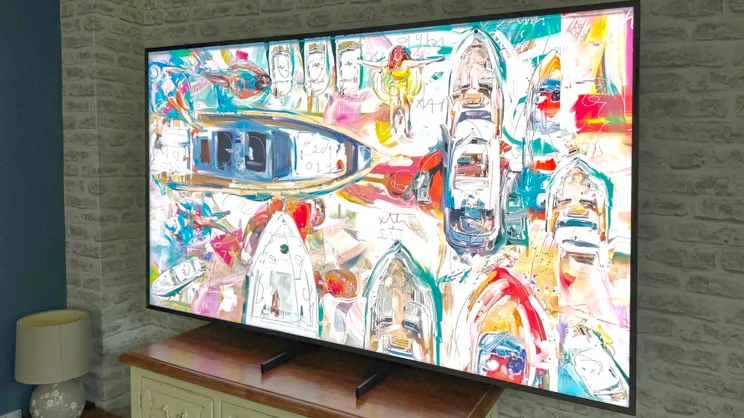
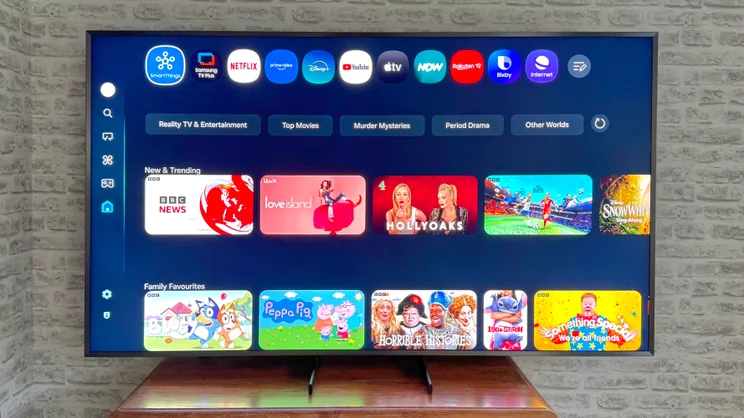
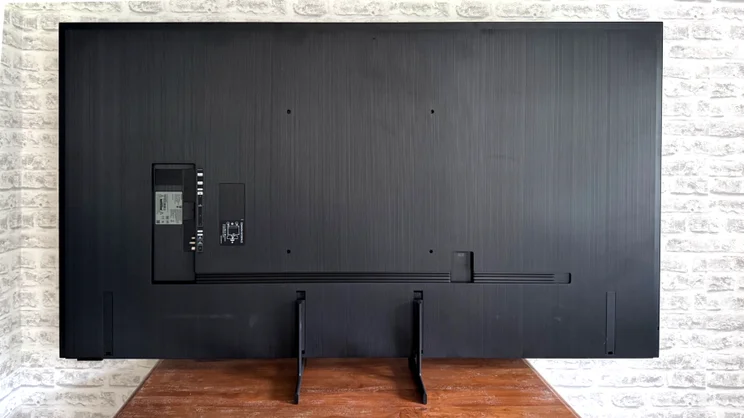
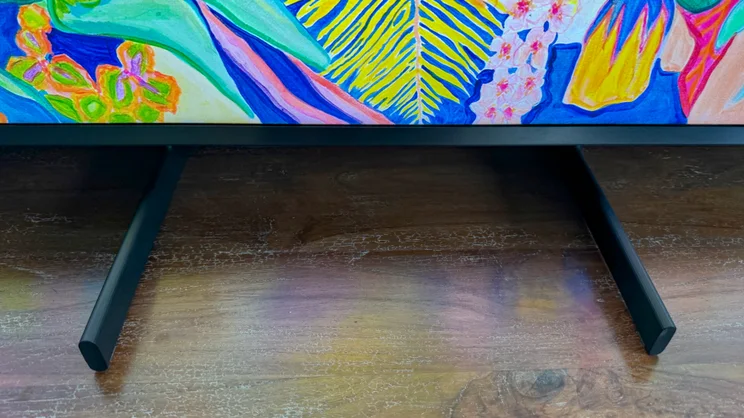
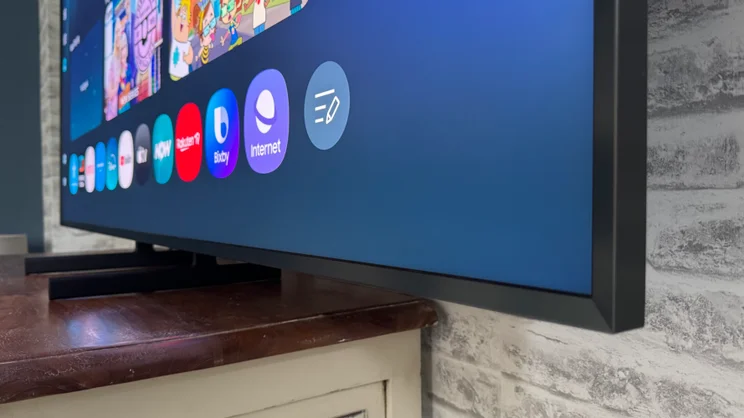
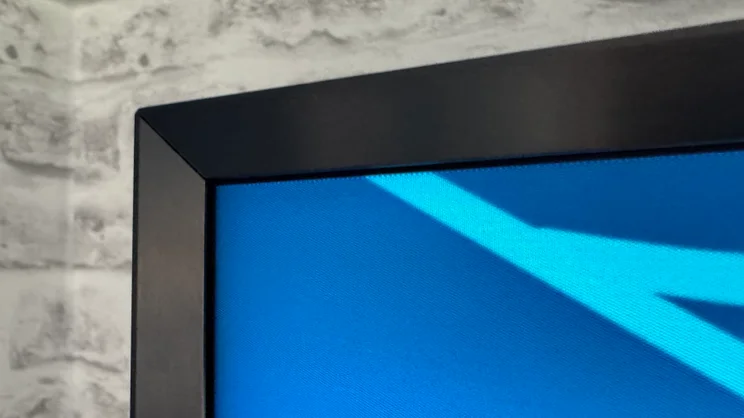
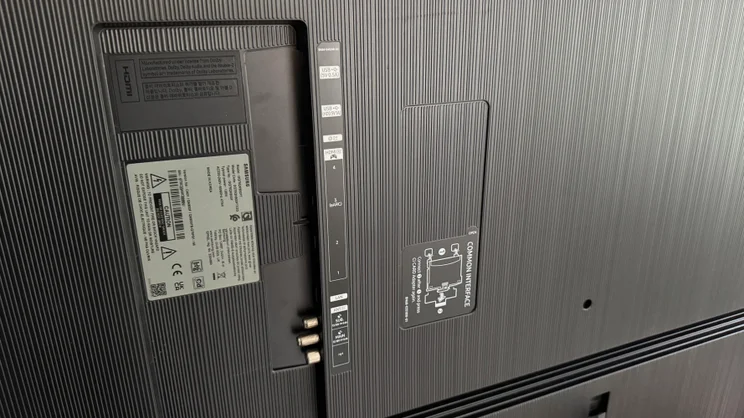
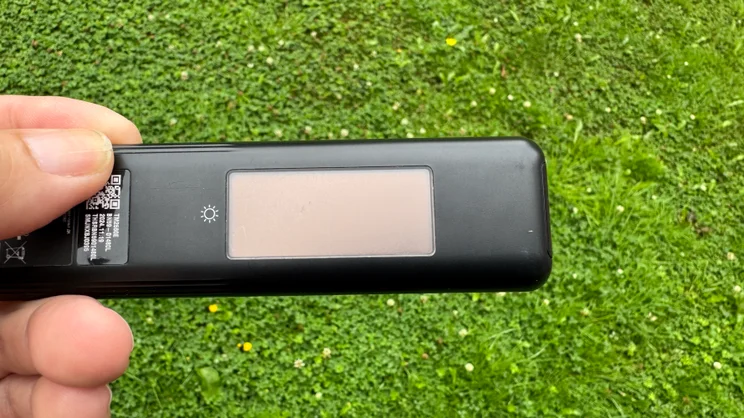
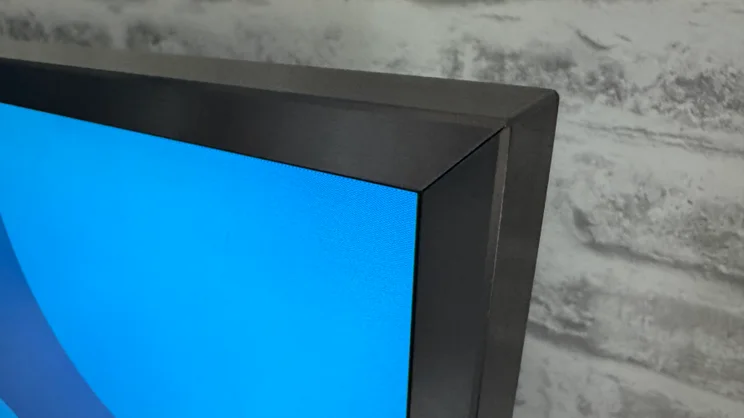
- Excellent 8K upscaling
- Outstanding backlight controls
- Cutting edge connections
- More expensive than 4K TVs
- No support for Dolby Vision
- Minimal 8K content around
After an initial flurry of interest a few years back that saw many of the biggest TV brands dip their toes into the 8K resolution market, an ongoing dearth of native 8K content has seen the number of 8K TV makers dwindle this year to … well … Samsung and no one else. Which is a bit ironic, actually, given that a few small shoots of 8K content growth are finally starting to appear.
The good news for Samsung’s 2025 QN900F 8K TVs is that they are perfectly placed to have the 8K market pretty much to themselves if it finally starts to take off. Realistically speaking, though, they are still going to have to offer something special with 4K and HD, as those are the sources most of us will be spending the majority of our time watching for good while yet.
Samsung QN900F review: Key Specifications
| Screen sizes available | 65in QE65QN900F, 75in QE75QN900F and 85in QE85QN900F |
| Panel type | Direct LED with local dimming |
| Resolution | 7,680 x 4,320 |
| Refresh rates | Up to 165Hz |
| HDR Formats | HDR10, HLG, HDR10+ |
| Audio Enhancement | 70W of total power, 4.2.2 channels of sound, Dolby Atmos decoding, Samsung’s Object Tracking Sound system |
| HDMI Inputs | 4 (one with eARC) |
| Freeview Play compatibility | Yes |
| Tuners | Terrestrial Freeview HD |
| Gaming Features | Up to 165Hz frame rate support, Auto Low Latency Mode switching, AMD FreeSync Premium Pro VRR support, HGiG support, Game Menu when game source detected, Mini Map Zoom, Super Wide Ultra Wide Game View support, Game Motion Plus mode, Dynamic Black EQ adjustment, Game Hub |
| Wireless connectivity | Bluetooth 5.3, Wi-Fi 6E |
| Smart Assistants | Bixby and Alexa built-in |
| Smart platform | Tizen |
What you need to know
Samsung’s QN900F series of TVs is available in 65in, 75in and 85in screen sizes that all carry native 8K resolutions. They’re also lit by Mini LED backlights, supported by premium local dimming and Quantum Dot colour systems.
The QN900F hardware is controlled by the second generation of Samsung’s NeoQuantum 8 AI processor. This is powered by a huge “256 neural networks” and includes in its remit the all-important job of upscaling 4K, HD and even SD content to the screen’s native 8K resolution.
There’s extensive gaming support to go with the formidable on-paper video features, including support for 4K games at 165Hz frame rates, while the 8K images are accompanied by a potent multi-channel sound system supported by Samsung’s object tracking sound system.










Price and competition
The 65in, 75in and 85in screens in the QN900F range are available for £2,799, £4,099 and £6,099 respectively. This makes them more expensive than the equivalent sizes of Samsung 4K sets (the QN90F mini LED TVs) to the tune of £900, £1,200 and £2,000 respectively.
Those price differences are far from insignificant, of course, but it’s worth noting two things: the prices of both the 8K and 4K TVs I’ve just given are both substantially down on their launch-day prices; and the QN900F’s prices are substantially lower than those demanded for Samsung’s flagship QN990F 8K TVs.










Finding native 8K competition from brands other than Samsung is difficult. A few stores are still selling LG’s QNED99 8K LCD series, which support Dolby Vision HDR; Samsung’s QN900Fs don’t and are thousands of pounds cheaper.
These LGs are more than a year old now, too, and use IPS panels that deliver significantly less contrast and light control than the VA panel types used in the Samsung QN900F .
LG’s beautiful OLED77Z3 8K OLEDs are still just about available, but stocks are limited and these 77in models cost the small matter of £14,999.
Design, Connections and Control
The QN900F sees Samsung shifting away from the ultra-slim frames of past 8K TVs in favour of a fairly wide, chamfered dark grey frame that resembles the look of Samsung’s The Frame TVs.
The resulting painting-like effect is reinforced with a remarkably effective anti-glare, anti-reflection treatment and a huge choice of digital artworks available to use as black screen-replacing “screensavers” when you’re not watching the TV in earnest.
While the QN900F design concept works best if hung on a wall, the sets do ship with a pair of feet that can be attached in either narrow or wide positions, with the TV sat either right down on them or raised high enough to accommodate a soundbar.










Connectivity on the QN900F is excellent. Four HDMI ports lead the way, all four of which support the full HDMI 2.1 specification so that they can handle 8K at 60Hz (if you can find any such sources) and pretty much the full range of gaming graphics features output by today’s consoles and PCs. Next to those are two USB-A sockets, an Ethernet port, an RF input, a digital optical audio output and the usual Bluetooth 5.3 and Wi-Fi support, plus Apple AirPlay.
As usual with Samsung TVs, the QN900F ships with two remote controls: a sleek, button-light handset with a solar panel on the back that I think most people will use day to day, and a button-heavy, more plasticky affair that actually proves more pleasant to use than you’d expect from looking at it.
You can also control the TV just by talking to it using either Samsung’s Bixby or Amazon’s Alexa voice recognition systems. If you have a Samsung Galaxy watch you can even move the cursor around the screen by moving your arm around, and select things by pinching your thumb and finger together. Clever – but a little too energetic for my tastes.
Smart TV Platform
The QN900F joins every other Samsung TV in using the brand’s home-grown Tizen platform. After a bumpy landing a few years ago, this full-screen Tizen interface is increasingly finding its feet now after Samsung’s initially rather clumsy switch to a full-screen smart interface a few years ago.
It now copes tidily with a huge array of content options and proves more intelligent than most rivals at figuring out what you like to watch and recommending content accordingly. Via multiple user profiles, it can do this for every member of your household, too.










I’ve already mentioned that you can operate the TV and instigate content searches just by talking to it, but it’s worth reiterating just how sophisticated this voice recognition is in terms both of recognising complex sentence structures and providing quite granular control of the TV’s many set up options.
Tizen doesn’t carry either Freeview Play or Freely, but it does provide the catch-up apps for all the key UK terrestrial broadcasters on an app-by-app basis.
Image Quality
Given their 8K native resolution and the fact that, as we’ll see later, they’re built with a really quite aggressive take on high dynamic range video in mind, you’d think the QN900F TVs would struggle with SD, HD and SDR footage. In reality, nothing could be further from the truth.
AV enthusiasts/purists will be delighted to know, for starters, that the QN900Fs not only carry a Filmmaker Mode, but that this Filmmaker Mode tracks movie and TV industry colour, brightness and greyscale values remarkably closely. There are none of Samsung’s old show-off tendencies here.
Brightness, for starters, is built on a 157.7cd/m2 level, which while merely a fraction of the brightness the QN900Fs are capable of, is a great starting point for delivering accurate SDR imagery. This is backed up by Delta E 2000 average errors for 2-point and multi-point grayscale tests (measured using Portrait Displays’ Calman Ultimate software and G1 signal generator, plus a Klein 10-A colorimeter) of just 2.3 and 2.1, respectively.










Even better, the QN900F Filmmaker Mode continues its flare for accuracy throughout Calman Ultimate’s entire roster of colour tests. A Gamut check turns in a Delta E 2000 average error of just 2.4. A deeper ColorChecker test across a wider range of colour test points produces an average error score of 2.5, and saturation and luminance sweeps record extremely low average error rates at just 2.0 and 2.2 Delta E.
The QN900F’s Filmmaker Mode retains good black levels and sufficient contrast, shadow detail and colour subtlety, too, unlike the rather drab-looking Filmmaker Mode efforts found on more than a few rival TVs.
The set’s upscaling system is remarkable. Even SD content looks engaging on the 8K screen, despite the tens and tens of millions of pixels Samsung’s AI processor is having to create on the fly for each and every frame. Particularly key to this remarkable upscaling performance is its ability to identify and remove noise in sources’ images before applying the upscaling processing, rather than simply upscaling and therefore exaggerating source noise as can happen with lesser upscaling engines.
The upscaled SD pictures don’t look like 8K, I should say; they’re too soft and scrubbed of fine details for that. But their colour tones remain authentic, and the relatively clean look to SD images is more than ample compensation for the slight softness compared with the relative mess one might have expected to see.
Upscaled HD sources are dragged up to something I’d describe as akin to 4K quality, even with digital HD content containing quite heavy compression artefacts.










It does no harm at all to the QN900F’s upscaled pictures, either, that its processing is also exceptionally good at handling motion. You can create a Custom setting for the TV’s Picture Clarity processing system, for instance, with Judder and Blur components set to around level 4 , and this stops judder with 24p sources from looking too strong without leaving the image looking processed or uncinematic.
Sealing the deal, however, though, is how extreme these TVs can go with brightness and colour with SDR SD and HD content without the results looking horrible.
Its Standard picture preset turns up the image’s core brightness all the way up to more than 1,400cd/m2, and pushes colour gamuts and tones well beyond the official SDR reference points.
The results aren’t remotely accurate, recording Delta E 2000 average errors of 19 and above – sometimes considerably more – across Calman Ultimate’s colour and grayscale tests. However, Samsung’s “expansion” of the SDR palette is extremely consistent across all the primary and secondary colours, meaning the results are balanced and still contain good amounts of subtle shading detail. So they’re still startlingly enjoyable and surprisingly immersive to watch, especially in a bright room environment.
HDR performance
Not surprisingly, the QN900F’s image quality really comes into its own with native 4K and HDR sources, its Quantum Dot colour system springing into life to deliver just over 94% of the DCI-P3 colour gamut, and a healthy 74.5% of the much wider BT 2020 spectrum.
Further Calman tests show the QN900F TVs capable of hitting brightness peaks of 2,400cd/m2 in the HDR Filmmaker Mode on a 25% window, only dropping to around 50cd/m2 or so on a 10% window.
And remarkably, the screen can retain almost 1,000 nits of brightness with a full-screen white HDR test signal, meaning it’s capable of delivering an exceptionally consistent HDR performance in brightness terms. This is borne out during subjective viewing, as the screen pumps out one of the brightest and punchiest, but also most stable HDR pictures I’ve seen.
Peak brightness does drop off a bit in the QN900F’s Standard picture preset, but only because the 1,446 separately controlled local dimming zones carried by the 75in QN900F screen I focused my testing on are working harder to extend the screen’s contrast and black level performance, resulting in an image that actually looks more dynamic overall.










The QN900F’s Filmmaker Mode delivers good levels of colour accuracy considering how aggressively bright it is, too, with ColorChecker and ColorMatch Calman Ultimate HDR tests recording Delta E 2000 errors of 2.06 and 3.68, respectively. Average error levels drop below 2 with luminance errors taken out of the equation, too.
The QN900F rather throws caution to the wind when it comes to accuracy in its much more dynamic-looking Standard HDR preset, with ColorChecker and ColorMatch Delta E 2000 average errors of 13.51 and 18.9, although these drop to 2.2 and 2.44 with luminance errors taken out of the equation again.
Just as with SDR playback, however, the heavier saturations of the QN900F are balanced and accompanied by enough tonal subtlety to ensure they gel together brilliantly. It leaves you watching a picture that, while undoubtedly aggressive, remains surprisingly convincing, compelling and consistent, and does nothing to throw you out of your immersion in what you’re watching.
The AI-driven processor in the QN900Fs gets fantastic results out of the thousand-plus local dimming zones each screen carries, delivering some of the deepest black levels in the LCD TV world while suffering with precious few backlight clouding or haloing distractions, despite the spectacular intensity of its bright highlights. There are no distracting baseline brightness jumps during cuts between dark and bright content, either.
Excellent though all these HDR performance traits might be, I haven’t yet got to the TV’s main feature: its 8K resolution. Does it really make a difference?
Yes, it absolutely does. The difference is most spectacularly evident with native 8K content, of course. The sharpness, density and refinement in native 8K demo reels and the best real 8K videos now available on YouTube (there are a few fake ones out there, alas) is gorgeous to behold, delivering a “window-on-the-world” effect beyond anything 4K technology can deliver.
With this in mind, it’s worth pointing out that in addition to the arrival of genuine 8K content on YouTube, 8K gaming is getting some backing, too. Earlier this year, AMD and Samsung put on an amazing demonstration, and NVIDIA’s GeForce RTX 3090, 4090 and 5090 graphics cards are also proudly claiming 8K HDR capabilities. So native 8K content feels now at least a bit more current than it has in previous years.










Nonetheless, the QN900F do need to deliver an advantage with 4K content, too, if it’s to justify its prices while 8K content is in such short supply. Just as well then, that it upscales 4K to 8K brilliantly, delivering a leap in detail, sharpness and three-dimensionality that’s clearly evident in side-by-side tests with Samsung’s latest flagship 4K LCD range. This is all delivered, too, without common upscaling problems such as exaggerated noise, line doubling or lag.
Upscaled 4K images don’t look quite as pristine and immediate as native 8K, but it’s remarkable how close they get.
There are one or two niggles with the QN900F’s HDR pictures. Shadow details can sometimes become lost in the very darkest areas – although nudging up the Shadow Detail adjustment a notch or two fixes this pretty handily. And Samsung’s default motion processing settings, especially in the Standard picture preset, are too aggressive with 24p movie sources. But I’ve already suggested how you can fix this via fairly straightforward manual tweaks.
Really, the only issue that can’t be fixed in the TV’s settings is the way backlight blooming becomes more evident when you’re watching the QN900F from a wide angle. And even that can be fixed if you can just change your seating position.
To test the Samsung QN900F, I used Portrait Displays Calman colour calibration software.
Gaming
Unless you’re the sort of competitive gamer who needs to play on a small screen, the QN900F TVs are awesome gaming displays. I wasn’t able to try any native 8K games on them, but the upscaling engine works even better with 4K and HD game graphics than it does with video. And despite the immense challenges associated with adding millions of pixels in real time, the QN900F still only take 10ms to render frames in 60Hz games in the TV’s game mode.
The screen’s native colour and contrast also hold up superbly in Game mode, with less of a drop off in contrast and colour intensity than I had expected, and motion looks beautifully fluid at 120Hz. The set’s advanced support for variable refresh rates removes all screen tearing.










The QN900F series is unusually rich in gaming-friendly features, too. I’ve already pointed out that all four HDMI ports can deliver the same extensive gaming features, but this is backed up by a dedicated Game Hub section, located in the TVs’ menu system, that brings together both your connected gaming devices and Samsung’s extensive collection of streamed gaming apps.
There’s support for HGiG, meaning the TV can turn off its own Dynamic Tone Mapping system with HDR games, in favour of the HDR settings optimised on your console or PC. And a Game Bar menu, available when the TV auto-detects an incoming gaming source, provides both detailed information on the graphics feed, and access to a variety of gaming aids, including a super-imposed crosshair, the ability to magnify a game’s mini map, support for ultra wide aspect ratio PC games, and a feature for raising the brightness of just the dark parts of your game world.
Sound Quality
The Samsung QN990F isn’t only a picture quality beast, though; its speakers deliver enough power and dynamic range to match the size and intensity of its images. The sound projects comfortably clear of the screen’s left, right and even top edges. And not only is it able to draw out every detail from a complex movie mix, but it can also place those details accurately within that space.
Samsung’s Object Tracking Sound is key here. Using a combination of multiple drivers and clever processing, the system can detect moving objects in a shot and then move their specific sound around the screen.










The overall combination of projection, power, clarity and accurate detailing really adds to the immersive effect created by the pure and punchy visuals, especially with Dolby Atmos soundtracks. And while bass isn’t quite projected as fluently as mid-range and treble, it never causes the speakers to break down into ugly distortion or the bodywork to give in to distracting buzzes or hums.
In a perfect world, the QN900Fs’ audio output would have a bit more forward momentum; as it stands, it produces more of a wall of sound than a true three-dimensional sound space. But this doesn’t stop the QN900F being the best-sounding TV I’ve heard from Samsung in years.
Samsung QN900F: Verdict
There is plenty of scepticism in consumer circles over 8K TVs, and it’s well-deserved. Despite small green shoots, the lack of native content has undermined the appeal of the format to the point at which most manufacturers have simply stopped making new 8K TVs.
Samsung’s QN900F, however, provides the most conclusive evidence that they might be wrong, and that 8K TVs can be viable, even in today’s HD and 4K-dominated world.
Regardless of format, it’s a great TV. It delivers superb SDR and HDR image quality across both movies and games, its audio output is nearly as impressive and it looks smart in your living room, too. In short, if you’re willing to invest this much in a TV of any stripe, the Samsug Q900F deserves your attention. It is simply superb.


